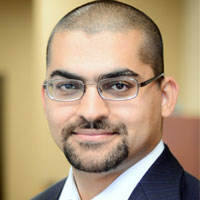Travelling to India for Hair Transplant: A Comprehensive Step-by-Step Guide
India has become a popular destination for hair transplants due to its advanced medical facilities, experienced surgeons, and cost-effective procedures. This guide provides a detailed, step-by-step overview for anyone considering travelling to India for a hair transplant.
Why Choose India for a Hair Transplant?
India offers several advantages for those seeking hair transplants:
- Cost-Effectiveness: Hair transplant costs in India are significantly lower than in Western countries, often by 60-80%, while maintaining high-quality standards.
- Experienced Surgeons: India has a large pool of highly skilled and experienced hair transplant surgeons, many of whom have trained and practiced internationally.
- Advanced Technology: Indian clinics use state-of-the-art technology and follow strict safety and hygiene protocols.
- Ease of Travel: With a well-connected network of international airports and diverse accommodation options, travelling to India is convenient.
Step 1: Research and Choose a Clinic
1.1. Identify Your Needs
Before starting your research, understand your specific needs:
- Type of Hair Transplant: Choose the technique that suits your hair type and extent of hair loss (e.g., FUE, FUT, DHI).
- Budget: Determine your budget, including travel, accommodation, and post-operative care.
- Desired Outcomes: Be clear about your goals and expectations for the procedure.
1.2. Research Clinics
Once you know your needs, start researching clinics:
- Online Search: Look for hair transplant clinics in major Indian cities like Mumbai, Delhi, Bangalore, and Chennai.
- Reviews and Testimonials: Check online reviews and patient testimonials on platforms like RealSelf and Google Reviews.
- Before-and-After Photos: Look at before-and-after photos provided by the clinics to gauge their success.
- Clinic Websites: Visit clinic websites to gather more information about their services and surgeon qualifications.
1.3. Consultations
Schedule consultations with shortlisted clinics:
- Online Consultations: Many clinics offer free online consultations for international patients.
- Ask Questions: Inquire about the surgeon's experience, the technology used, aftercare, and potential risks.
- Comparison: Compare multiple clinics to make an informed decision.
1.4. Verify Accreditation
Ensure the clinic is accredited and adheres to international standards:
- Accreditations: Verify that the clinic is accredited by Indian bodies like NABH and international organizations like JCI.
- Hygiene and Safety: Ensure the clinic follows strict hygiene and safety protocols.
Step 2: Plan Your Travel
2.1. Passport and Visa
Prepare your travel documents:
- Passport Validity: Ensure your passport is valid for at least six months from your arrival date.
- Medical Visa: Apply for a medical visa through the Indian embassy or consulate in your country.
- Visa Duration: Medical visas are usually issued for six months to one year, allowing multiple entries if needed.
2.2. Book Your Flight
Book your flight well in advance to get the best rates:
- Flight Options: Compare prices and consider direct flights to minimize travel time.
- Travel Insurance: Purchase comprehensive travel insurance that covers medical procedures and potential complications.
2.3. Accommodation
Choose accommodation close to your chosen clinic:
- Proximity: Stay near the clinic to reduce travel time and stress.
- Types of Accommodation: India offers a range of options from budget hotels to luxury resorts and serviced apartments.
- Medical Facilities Nearby: Consider staying in an area with good medical facilities in case of emergencies.
2.4. Local Transportation
Arrange for local transportation:
- Airport Transfers: Arrange airport transfers through your hotel or clinic.
- Local Commute: Use reputable services like taxis, Uber, or public transport for safety and convenience.
Step 3: Pre-Procedure Preparations
3.1. Medical Evaluation
Undergo necessary medical evaluations:
- Pre-Operative Tests: Clinics may require blood tests, ECG, and other evaluations to ensure you are fit for surgery.
- Medical History: Provide a detailed medical history, including medications, allergies, and previous surgeries.
3.2. Prepare for the Procedure
Follow pre-operative instructions carefully:
- Pre-Operative Instructions: Follow any pre-operative guidelines, such as stopping certain medications, avoiding alcohol, and fasting before the procedure.
- Hair and Scalp Care: Follow any specific hair and scalp care routines advised by your surgeon.
3.3. Financial Arrangements
Confirm the cost and payment details:
- Cost Confirmation: Confirm the total cost of the procedure, including any additional fees.
- Payment Methods: Check the accepted payment methods and carry some local currency for smaller expenses.
3.4. Plan for Post-Procedure Care
Prepare for post-operative care:
- Post-Operative Supplies: Purchase recommended post-operative supplies in advance.
- Recovery Plan: Plan for recovery time, including time off work and arranging for assistance if needed.
Step 4: The Hair Transplant Procedure
4.1. Pre-Procedure Consultation
Meet your surgeon in person before the procedure:
- In-Person Meeting: Discuss any last-minute questions and the specific details of the surgery.
- Procedure Plan: The surgeon will outline the procedure plan, including the number of grafts and the timeline.
4.2. The Surgery
Understand the surgery process:
- Procedure Duration: Hair transplant procedures typically take 4-8 hours, depending on the number of grafts.
- Local Anesthesia: Local anesthesia is given to numb the scalp, making the procedure painless.
- FUE Technique: If undergoing FUE, individual hair follicles are extracted and implanted into the recipient area.
- FUT Technique: In FUT, a strip of scalp is removed, and hair follicles are separated and implanted.
- DHI Technique: In DHI, follicles are extracted and immediately implanted using a special tool.
4.3. Post-Procedure Care
Follow aftercare instructions for optimal recovery:
- Immediate Aftercare: The clinic will provide detailed aftercare instructions, including medications and activities to avoid.
- Pain Management: Mild discomfort, swelling, or itching may occur, and pain relievers will be prescribed.
- Avoid Physical Activities: Avoid strenuous activities and direct sun exposure for at least a week.
4.4. Follow-Up Visits
Attend follow-up visits as scheduled:
- Scheduled Follow-Ups: Follow-up visits are typically scheduled a week, a month, and three months after the procedure.
- Monitor Healing: The surgeon will check the healing of both the donor and recipient areas and provide additional guidance.
Step 5: Recovery and Tourism
5.1. Recovery Time
Plan for recovery time while enjoying India:
- Initial Healing: Most patients can return to normal activities within a few days to a week.
- Shedding Phase: Transplanted hair may shed within the first two weeks, with new growth beginning in the following months.
5.2. Explore India
Combine recovery with tourism:
- Cultural Attractions: Explore India's rich cultural heritage by visiting landmarks like the Taj Mahal and temples of Varanasi.
- Local Cuisine: Enjoy India's diverse cuisine while maintaining a healthy diet during recovery.
- Shopping: Experience vibrant shopping in India's markets and malls for traditional handicrafts and souvenirs.
5.3. Post-Procedure Support
Stay in touch with the clinic for ongoing support:
- Ongoing Support: Many clinics offer virtual follow-ups for international patients after they return home.
- Final Consultation: Have a final in-person consultation before leaving India to ensure everything is on track.
Step 6: Return Home
6.1. Final Preparations
Prepare for your return home:
- Medical Clearance: Get a final medical clearance from your surgeon before flying home.
- Medical Records: Collect all medical records, including procedure details and follow-up instructions.
6.2. Post-Return Care
Continue aftercare once home:
- Continue Aftercare: Follow aftercare instructions, including using prescribed medications and avoiding harsh hair treatments.
- Local Follow-Up: Schedule a follow-up with a local dermatologist or surgeon.
6.3. Monitor Results
Patience is key during the recovery process:
- Patience is Key: Hair growth is gradual, with full results taking 12-18 months.
- Track Progress: Take photos every few months to track your progress.
Travelling to India for a hair transplant can be a rewarding experience, offering high-quality care at a fraction of the cost compared to other countries. By following this comprehensive step-by-step guide, you can ensure a smooth and successful journey from initial research to final recovery.
India's combination of skilled surgeons, advanced technology, and rich cultural experiences makes it an ideal destination for those seeking hair restoration solutions. Whether you're just beginning your research or are ready to book your trip, this guide provides all the information you need to make informed decisions and achieve the best possible results.







